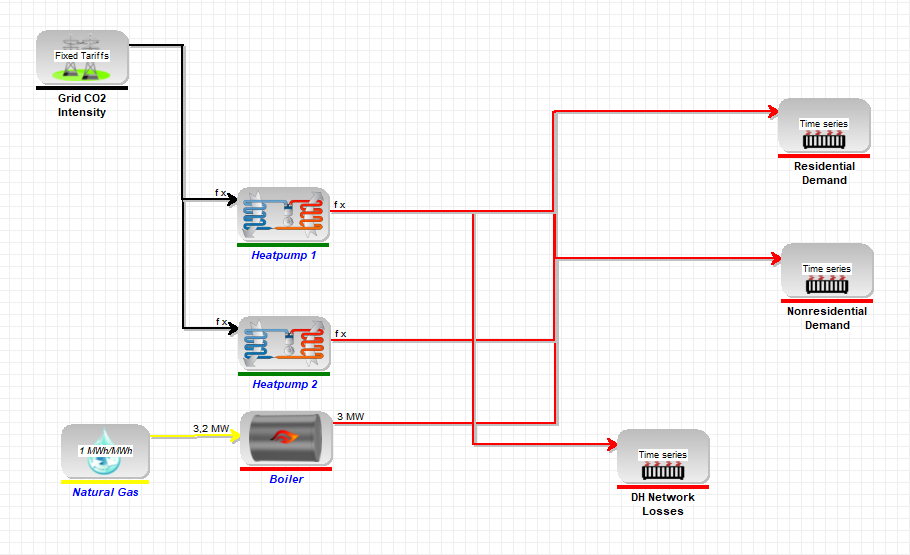The Queens Quay Benchmark Scenario
For the Queens Quay Benchmark (QQB) model, the baseline heat demand hourly time series, monthly time series of the heat network, and the two water source heat pumps were initially inputted into energyPRO. For each of the heat pumps, a 2.6MWth heat output, a 773kWel electrical capacity, a COP of 3.0 for the design conditions, and a 55 - 75°C temperature range were assumed. As for the heat source temperatures (here corresponding to the temperatures of the River Clyde), a [3, 6]◦C temperature range was assumed. The COP of the heat pumps throughout the simulation period was calculated by energyPRO for those inputs, using a simple Lorentz model.
After simulating this model, it was found that the system could not meet the energy requirements of the buildings. Therefore, the model was updated and a back up natural gas boiler was included in it. The boiler was sized at a 3MWth output (assuming an efficiency around 94%), according to the energy deficiency observed in periods of high demand, when the overall thermal capacity of the heat pumps proved to be insufficient. Following a similar approach to that of the electrical grid carbon intensity, a fixed carbon 'price' was used as an input for natural gas. The graphical representation of this model can be seen in the following figure.

The layout of the QQB model in energyPRO.
By simulating the updated QQB scenario, it became apparent that the heat pumps were prioritised over the boiler, which was utilised only to cover certain peaks in demand.